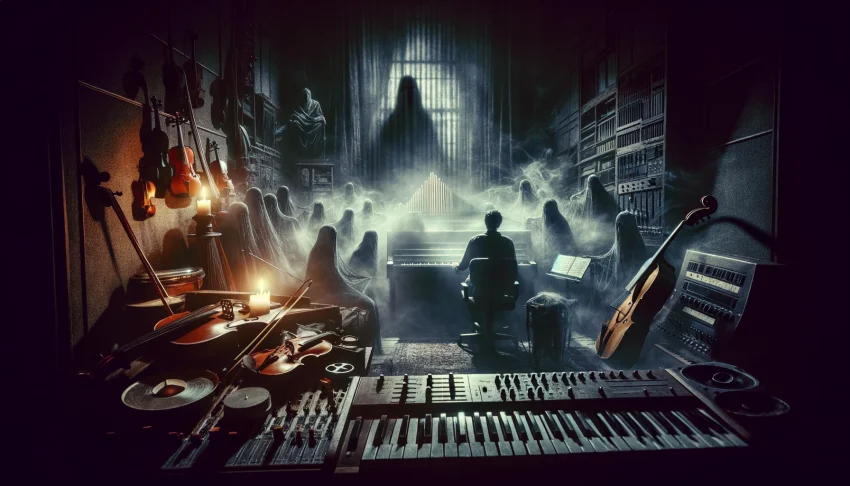The spine-chilling allure of horror movies is as much about what you hear as what you see. The score of a horror film plays a pivotal role in creating an atmosphere of suspense and terror. This article delves into the art of scoring for horror movies, exploring the techniques and elements that composers use to evoke fear and unease in audiences.
The Psychology of Fear in Music
Understanding how music influences emotion is crucial in horror film scoring. Certain sounds and musical structures are universally recognized as unsettling or disturbing. Dissonant chords, irregular rhythms, and abrupt volume changes can trigger instinctual fear responses in the brain. Composers leverage these elements to evoke a sense of dread and foreboding.
Historical Perspectives
The history of horror film scores offers insights into the evolution of this art form. Early horror films like Nosferatu (1922) used classical compositions to create tension. Bernard Herrmann’s score for Psycho (1960), with its screeching violins during the infamous shower scene, marked a turning point, showing how music could be integral to delivering shocking moments.
The Role of Silence and Sound Design
Silence, or the strategic absence of music, can be as powerful as the music itself in horror movies. The sudden cessation of sound creates a vacuum, amplifying the impact of the next frightful moment. Similarly, sound design – encompassing non-musical elements like creaking doors, footsteps, and eerie whispers – works in tandem with the score to heighten suspense.
Instrumentation and Innovation
The choice of instruments is vital in a horror movie score. Traditional orchestral instruments, especially strings and brass, are often used to create tension. However, modern composers like to experiment with electronic sounds, distorted vocals, and unconventional instruments (like the waterphone) to produce unique and unsettling soundscapes.
Iconic Horror Scores
Several horror movie scores have become iconic, influencing both cinema and music. John Carpenter’s minimalist, synthesizer-driven score for Halloween (1978) created an enduring sense of dread. The unsettling lullaby of ‘Rosemary’s Baby’ (1968) and the eerie, choral elements of ‘The Omen’ (1976) are other examples of scores that have significantly contributed to their films’ terrifying atmospheres.
The Impact of Music on Visuals
Music can alter the perception of visuals in a horror film. A scene that is mildly unsettling can become genuinely terrifying with the right musical accompaniment. The interplay between what is seen and what is heard is a delicate balancing act that horror film composers masterfully navigate.
Modern Trends and Techniques
Contemporary horror scoring has seen a shift towards more ambient and textural soundscapes. Composers like Trent Reznor and Atticus Ross use electronic and industrial sounds to create an atmosphere of unease. This approach, focusing on mood rather than melody, reflects modern horror cinema’s inclination towards psychological terror over physical shock.
The Art of Manipulating Emotions
Ultimately, the art of scoring for horror movies is about manipulating emotions. Composers must understand the narrative and psychological underpinnings of a scene to craft music that enhances the film’s impact. The goal is to create a score that lingers in the mind, long after the movie has ended, continuing to evoke a sense of dread and fear.
Scoring for horror movies is a unique and complex art form that plays a crucial role in the genre’s effectiveness. Through a combination of musical theory, psychological insight, and creative innovation, composers craft scores that enhance the terror and suspense of horror films. As the genre continues to evolve, so too will the art of horror scoring, ensuring that audiences remain on the edge of their seats, hearts racing in anticipation of the next scare.
